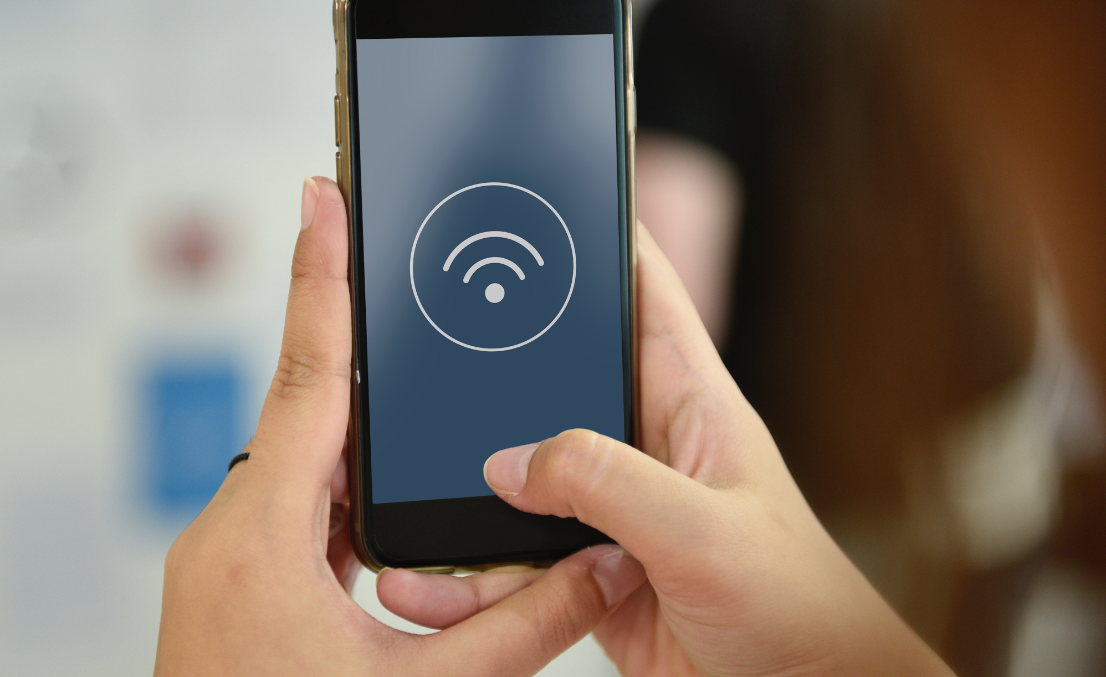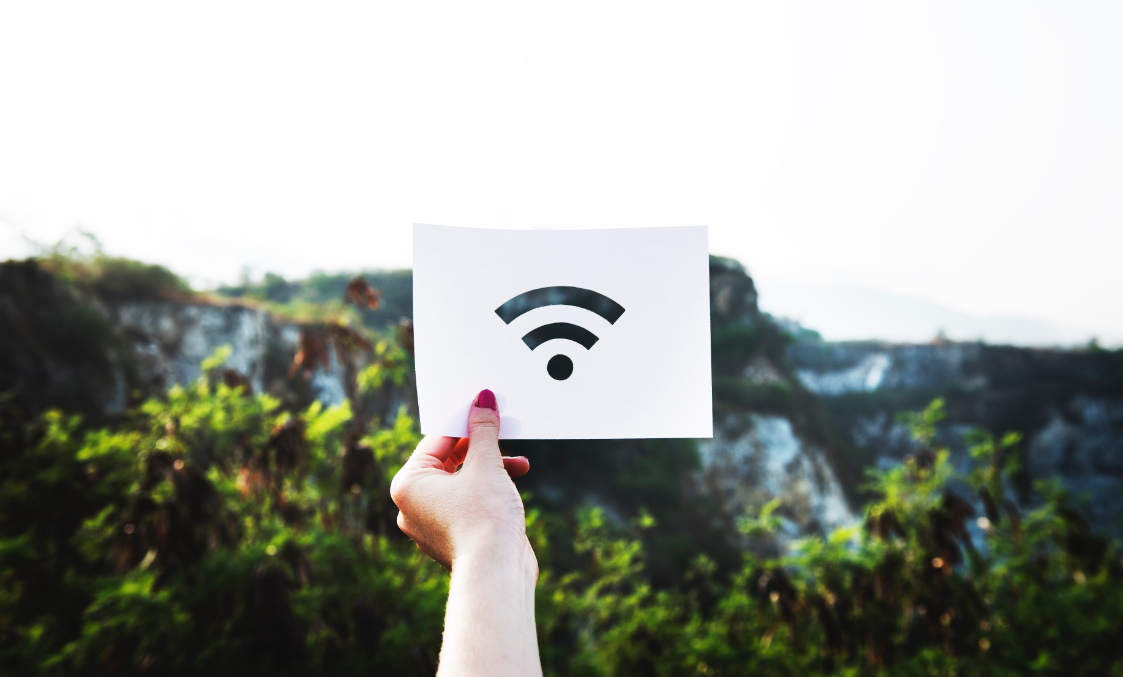A few blogs back we wrote about Wireless Bridges. In this post we’ll go into a bit more detail about how to actually go about putting in a Wireless Bridge to link networks and/or buildings.
You might be wanting to link CCTV feeds, or maybe you need to network between two buildings. You may have a temporary site that needs internet connectivity, or be surrounded by difficult terrain that stops you from laying cables. If you’re based in the city then the infrastructure doesn’t lend itself well to having the ground dug up for fix fibre lines. Perhaps you’re running an event or have audio visual installation requirements.
What you don’t want to be doing is digging holes, laying cables and making a big mess, when you could just do it all wirelessly.
So let’s get started – the points to consider when doing point to point wireless bridging.
Vision
Are you able to see where you are trying to get your signal to? If there is anything interfering with your line of sight, then this will disrupt your signal, lower it’s strength and negatively affect data rates. If it’s in your sight, then it’s in the way of your wireless signal. Ways around any potential signal disruptions are sending the signal from a taller mast or a repeater. You don’t want to be losing data because things are in your way.
Scope
The scope of coverage between points can vary – Some links need only be 20 metres away, whereas some could go up to approximately 12 kilometres in ideal conditions. The longer the range between links, the more specialised equipment and licensed frequencies you will need. With larger scope also comes larger things to consider, like how the earth isn’t flat! A wireless signal might be straight, but our planet is not so you’ll need to consider adjusting height to mountings to get over that curve on longer point to point ranges.
Ingress Protection Rating
If your wireless link is business critical (which if you’re reading this, it probably is) then it’s very important that the devices you are using have an official IP rating. Devices that do not have this rating will likely not be reliable for your needs. An IP rating gives you an idea of how well a device can keep out dust and water. The IP rating will be given in the form of a number – The firs tis for protection against solids and the second is protection against liquids.
What Frequency Do I Need?
Almost any frequency can be used for Wireless Point to Point Bridges. The options are: 2.4GHz, 5GHz, 60GHz, 80GHz, Free Space Optics, or Laser Links.
If we start with 2.4GHZ, this one is more often than not overlooked due to heavy congestion. But if you’re in a rural area with little to no interference then this frequency would probably be fine for you.
If you’re in a busier, city based area like the centre of London then the next frequency in line of 5GHz would probably be too busy. If you are using wireless in the home or even a small business and not in the centre of a lively city then this frequency will likely be the one you go for.
If you are bridging a link over 1km and it is business critical then you’ll be wanting to have a look at 60GHZ and microwave technology. This frequency (like 24GHz)require licensing plans, but you’ll find details of this on the products you are looking to purchase.
If you’re a small business, enterprise or have a ‘business critical’ link over 1km or so, you’ll want to look into 60GHz and microwave technology.
To give you an idea of speeds, frequencies and distances, here is a basic guideline:
2.4GHz max speeds: ~170Mbps (15km max)
5GHz max speeds: 700+Mbps (12km max)
60GHz max speeds: 5Gbps (1.5Km max)
Laser max speeds: 10+Gbps (350m max)
Fresnel Zone
To keep it as simple as possible… “A Fresnel zone, named after physicist Augustin-Jean Fresnel, is one of a series of confocal prolate ellipsoidal regions of space between and around a transmitting antenna and a receiving antenna system.”
Basically, when a wireless signal is transmitted from one antenna to another receiver, it takes on a rugby ball type 3D shape. Imagine your signal emitting as a cone shape which peaks in size at the middle and then tapers back down until it reaches the antenna. Each side of the cone is a radio wave beam, so each signal is shooting 2 beams at the antenna.
We spoke earlier about your vision. Anything that interferes with your vision, interferes with the Fresnal Zone and will cause you to loose signal, throughput and data.
Throughput
Do you know how much data you need to be transmitting? If not, then you need to work it out. The throughput is the amount of data your link can handle being transmitted across the air in both directions. A link will need to handle download and upload, so a link that can cope with a total of 180Mbps will br broken down into 90Mbps upload and 90Mbps download.
When you are working out how much data you need, make sure to leave a little wiggle room. Remember that wireless links aren’t always the absolute ideal – There can be external factors that might affect this, weather for example.
So if a link can handle 85Mbps, and you have a device that pushes 4Mbps, you wouldn’t be silly for thinking that said link would be able to handle 20 devices. But it’s leavings things a bit close for comfort which is a tad risky. Always err on the side of caution.
Wi-Fi Protocol
Rules and guidlelines for communication are governed by Wireless Protocols. For example, the waveform and total throughput is dictated by protocols such as 802.11ac and 802.11n. Products on the 802.11n protocol can push 170Mbps, whereas if you configure it correctly and push it to the absolute limit, 802.11ac products can push up to 700+ Mbps.
When the supercharged version of 802.11n arrived in the form of 802.11ac it was a dozen times faster. 802.11ac presented a waveform with a much higher complexity – It had an additional channel which allowed for larger bandwidth as well as increasing Quadrature Amplitude Modulation (QAM – digital modulation methods used to transmit information via telecommunication) from 64 to 256.
Remember though, that 802.11ac is only on a 5GHz frequency.
Quality of Service
Quality of Service enables data deemed a priority to get across the link first, before other data.
For example business critical, sensitive or easily lost data would be prioritised.
Video and voice data are also seemed a priority as they must be sent in the correct order and cannot be dropped or re-sent to ensure that the integrity of the data is intact.
Thus, anything that is not this core data may be subject to a second class service level to ensure that the most important data is sent securely.
Antenna Power
Don’t forget to consider the power or gain of the antenna you are using for your Point to Point links.
You’ll need to know how far you are firing your link – Will it be short range or longer? Make sure you choose the product that best matches the range you are trying to reach. Some products will better much short range links, and other will manage long range links over several kilometres.
Most products will display the antenna gain within the product name so try and get yourself clued up as much as possible so you know what you’re looking for.
Don’t be fooled into thinking that going for the longer range products is the safest option. It’s worth knowing that you may run into problems if you choose an antenna with a higher gain but try to deliver high dBi (decibel isotropic – uniformly radiating in all directions) at close range. The higher the gain, the harder the radio waves are ‘projected’ and the thinner the beamwidth will be.
AES Encryption
WPA2 is a type of encryption used to secure the vast majority of Wi-Fi networks. A WPA2 network provides unique encryption keys for each wireless client that connects to it. Additionally, an AES (Advanced Encryption Standard) is available on most wireless links as standard. This AES extends the security of WPA2 and gives you an added lasyer of security.
Protocols such as AirMAX
We mentioned earlier about QoS and how voice and video data take priority. AirMAX is an example of a wireless link from Ubiquiti where proprietary protocols try to ensure their QoS voice and video prioritisation.
Time Division Duplex or Full Division Duplex – How Do The Radios Talk to Each Other?
Imagine playing walkie-talkies. When you’re speaking to the person on the other end, you hold the button and speak. While you’re speaking and holding down the button, you can only talk but not hear. When you’re finished speaking, you let go of the button and wait for the other person to speak to you. This is essentially Time Division Duplex.
There are also radios that can speak to and hear each other at the same time – This is Full Division Duplex and usually doubles your throughput capabilities.
Alignment and Mounting
It’s all well and good understanding the technical bits and choosing the right products, but it won’t do you justice if they’re not mounted or aligned properly.
You want to achieve the best possible throughput that your hardware can offer so you need to align them as precisely as possible.
The finer the alignment, the more likely you will get the link you desire, so don’t skimp on mounting brackets and sturdy poles.
Remember that wind, heavy rain and even wildlife can affect alignment so take this into consideration when securing everything.
Alleviating Interference
You might notice on the product you’ve got that the manufacturer has specific coded software to reduce interference.
With a bit of common sense, you can also ensure that you minimise any potential interference through the placement of your products during installation. For example, don’t install twenty 5GHz radios on one pole, with 3 of them on the same channel.
So there you go, a pretty comprehensive list of things to consider when setting up wireless point to point links to save getting your hands dirty digging trenches. If you’ve read this until the end and still feel a bit none-the-wiser, then why not give one of our Hampshire, Wales or London based Wi-Fi experts a call and discuss how Geekabit could help with your point to point needs.











